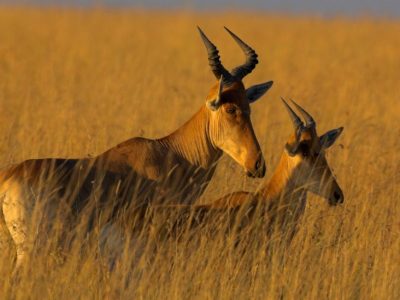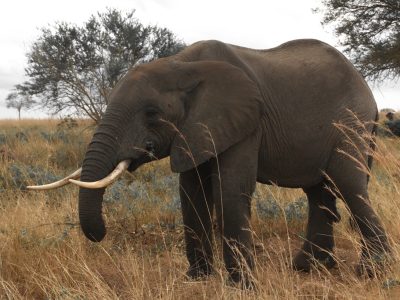About Ngorongoro Crater
The Ngorongoro Conservation Area is a protected area and a World Heritage Site located 180 km (110 mi) west of Arusha in the Crater Highlands area of Tanzania. The area is named after Ngorongoro Crater, a large volcanic caldera within the area. The Ngorongoro crater formed when a large volcano exploded and collapsed two to three million years ago. The volcanic eruptions like that of Ngorongoro, which resulted in the formation of Ngorongoro Crater in Tanzania, were very common. Similar collapses occurred in the case of Olmoti and Empakaai, but they were much smaller in magnitude and impact.
Main activity is game drives in the Ngorongoro Crater floor, a vast expanse where animal activity is common place Approximately 25,000 large animals, mostly ungulates, live in the crater. Wildlife in the crater include the black rhino, buffalo, wildebeest, zebra, the common eland, Grant’s, Thomson’s gazelles, Waterbucks, lions, hippos, crocodiles.
The Ngorongoro Conservation Area stretches from the Crater Highlands up to the Serengeti and the northern shore of Lake Eyasi. The Ngorongoro Crater was created by the same volcanic movements which also formed the Great Rift Valley, was once as high as Mount Kilimanjaro.
Approximately 3 million years ago Ngorongoro erupted, covering the Serengeti with ash, leaving a large crater in the center of the mountain. The Ngorongoro Crater is the largest intact caldera in the world, with a diameter of about 18 km and an area of 260 km2. The steep crater ridge is more than 600m at its highest point.
The crater floor is an earthly paradise and, with about 30,000 animals, one of the most populous wildlife areas in the world. Because the area is enclosed and the flat crater floor is mainly open grassland, it is easy to manage, with the result that it is a stronghold of endangered species, including the black rhino and the cheetah. There are no giraffes, topi or impala in the crater. These animals find the rocky areas too difficult to use and there is insufficient grass for large herds of antelope.
The main prey animals are wildebeest, zebra and buffalo and the main predators are the lions and spotted hyenas. In the open savannah a hunt can be followed quite easily, and is especially interesting as it seems that in Ngorongoro, contrary to what one might expect, the hyenas are the aggressive hunters and the lions are the carrion eaters. Lake Magadi, located in the southwest, is a large shallow soda lake where countless flamingos and other water fowl live alongside the hippopotamuses.
Magnificent as it is, the Ngorongoro Crater is only a small fragment of the Ngorongoro Conservation Area, and among the areas other attractions are two lesser-known craters, Olmoti and Empakaai. The added attraction of visiting these craters is that you can either walk or drive all the way to the foot of Olmoti, or the rim of Empakaai. Olmoti rises to 3073m at its western rim, which can be reached by walking through bush and grassy tussocks often bedecked with flowers. An additional highlight of the area is the Munge Falls, which flow through a cleft on the Crater’s southern side. The stream cascades down steep cliffs, hundreds of metres into a ravine.
From the edge of the crater the road twists downwards towards the Serengeti through rolling grass plains and acacia forests. About 30 kilometers from the crater, there is a narrow road to the Olduvai Gorge. At the site of the gorge, which is approximately 90 meters deep, there was once a lake. Over the years, the lake was covered with thick layers of volcanic ash, which preserved the remains of early humanity. To be so close to where mankind may have begun is an inspiring experience, especially when you see the famous Laetoli footprints, made by early humans some 3.6 million years ago.





